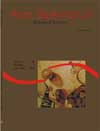<b>Callus induction in sempre-viva (<em>Syngonanthus mucugensis</em> Giulietti) using different types of explants and BAP concentrations</b> - DOI: 10.4025/actascibiolsci.v30i3.3624
Abstract
Sempre-viva-de-mucugê [Syngonanthus mucugensis – Eriocaulaceae] is a plant with great ornamental value characterized by the durability of its inflorescences, which remains even after collected and dried. The sexual propagation of this species results in disuniform plants, as it is genetically segregating; in addition, this species is currently endangered, with collection therefore restricted to its region of origin. Thus, tissue culture becomes a viable alternative for the formation of new plants. This study aimed to evaluate the in vitro induction of callus in Syngonanthus mucugensis using different BAP concentrations. The experimental design was completely randomized, with each treatment containing 4 repetitions and each repetition formed by 4 explants. The explants used were seedlings cultivated in vitro and their nodal segments. The culture medium used was MS (half-strength concentrations) supplemented with 0.0; 0.89; 1.78; 3.55; 7.10; 14.21 and 28.42 µM of BAP. At 60 days, the survival of the explants and the percentage of formation of callus were evaluated. It was verified that seedlings and nodal segments of Syngonanthus mucugensis are responsive explants to the formation of friable callus, with significant production obtained using the 1.78 and 3.55 µM BAP concentrations.Downloads
Download data is not yet available.
Published
2008-05-29
How to Cite
Santos, J. da P., Dornelles, A. L. C. de, Pereira, F. D., & Oliveira, L. M. (2008). <b>Callus induction in sempre-viva (<em>Syngonanthus mucugensis</em> Giulietti) using different types of explants and BAP concentrations</b> - DOI: 10.4025/actascibiolsci.v30i3.3624. Acta Scientiarum. Biological Sciences, 30(2), 127-131. https://doi.org/10.4025/actascibiolsci.v30i2.3624
Issue
Section
Botany
DECLARATION OF ORIGINALITY AND COPYRIGHTS
I Declare that current article is original and has not been submitted for publication, in part or in whole, to any other national or international journal.
The copyrights belong exclusively to the authors. Published content is licensed under Creative Commons Attribution 4.0 (CC BY 4.0) guidelines, which allows sharing (copy and distribution of the material in any medium or format) and adaptation (remix, transform, and build upon the material) for any purpose, even commercially, under the terms of attribution.
Read this link for further information on how to use CC BY 4.0 properly.
0.6
2019CiteScore
31st percentile
Powered by 

0.6
2019CiteScore
31st percentile
Powered by 











1.png)




3.png)













